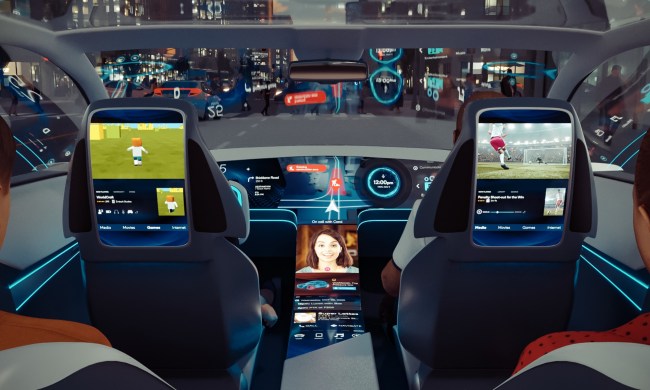
FCA joins Detroit rivals General Motors and Ford, which also used CES to announce the inclusion of CarPlay and Android Auto. The systems add a layer of device-specific functionality and content to the infotainment systems developed by the carmakers themselves. They allow drivers to use a car’s built-in controls for smartphone functions like sending text messages, accessing music, and looking up directions.
The fourth-generation Uconnect system will feature a few other upgrades, including capacitive touchscreens, heightened touchscreen responsiveness and resolution, greater processing power, and faster startup. CarPlay and Android Auto will be offered with the 8.4-inch system and “select others,” according to Chrysler. The upgraded systems will roll out later this year.
FCA will also launch a new police-specific version of Uconnect on the 2016 Dodge Charger Pursuit. This system features a substantial 12.1-inch central touchscreen that Chrysler says is more than five times larger than previous versions. It will display radio and vehicle controls, and will include a menu option to toggle to a police computer display.
Looking forward, FCA’s CES display will include a “technology concept” meant to preview future in-car tech, alongside the production Uconnect systems. Some of those potential future gizmos include a “workload manager” that identifies when a driver needs to concentrate more, and prioritizes information accordingly, “privacy mode” that moves personal information to the driver’s display when a passenger is present, and and “intelligent concierge” that learns the driver’s various preferences.
Chrysler also hopes to make use of “vehicle-to-X” communication technology, which uses a Wi-Fi-like medium to allow cars to “talk” to each other and surrounding infrastructure. Potential uses for this tech could include “community tagging” that allows vehicles to warn each other of hazardous situations, a “follow-me mode” that lets drivers request to follow other vehicles, and an augmented-reality head-up display that helps assist the driver.


